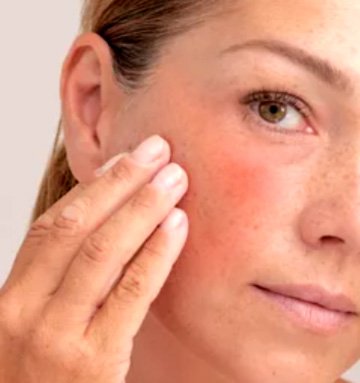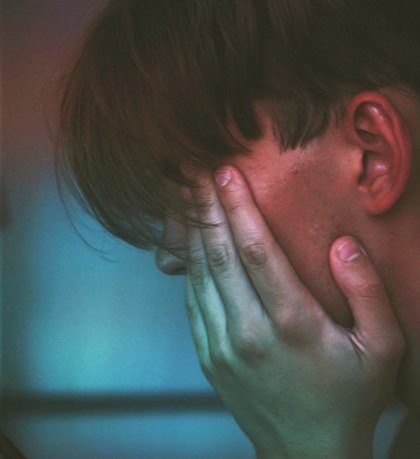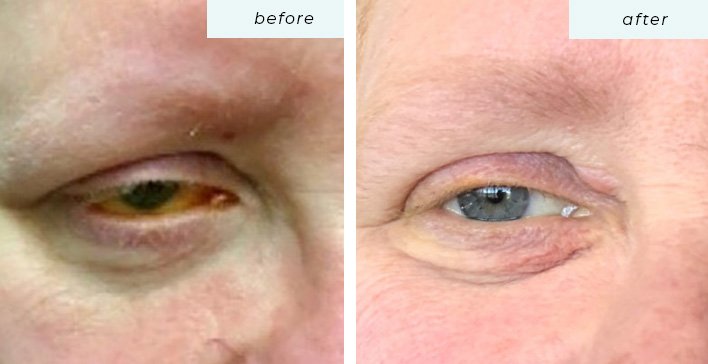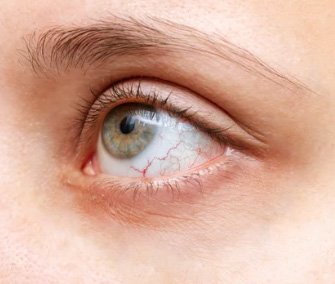
LIGHT THERAPY
FOR DRY EYE
IPL Therapy: Dry Eye & Skin Evening
Staying true to our commitment of sourcing the most up-to-date, innovative treatments available, we are excited to tell you more about the OptiLight by Lumenis, the first and only FDA-approved intense pulsed light (IPL) treatment for dry eye management.
This phenomenal IPL technology has been used to treat dry eye stemming from both dry eye disease, as well as skin conditions in the periocular region. Below we have outlined some of the common symptoms, treatments, and IPL benefits for each:

IPL THERAPY FOR DRY EYE DISEASE
Dry Eye Disease
Dry eye disease is becoming increasingly common, affecting millions of people worldwide. This chronic condition can significantly impact your life, sometimes making even the smallest of tasks seem difficult. Dry eye disease is an eye condition that occurs when there is an issue with any one of the three components of your tears. Your tears are made up of 3 distinct layers, all of which work together to keep your eyes healthy:
The oily layer prevents your tears from evaporating too quickly
The watery layer delivers nutrients to your eyes
The mucus layer keeps your tear film stuck to the surface of your eyes
Types of Dry Eye Disease
There are two types of dry eye disease:
Evaporative Dry Eye (EDE)
The most common type of dry eye disease is EDE. This type of dry eye occurs when you lack the proper amount of oil in your tears. When this happens, your tears can evaporate too quickly, drying out your eyes. In some cases, EDE can be caused by meibomian gland dysfunction, a disorder where the meibomian glands in your eyes become blocked, limiting the amount of oil being produced for your tears.
Aqueous Tear Deficiency (ATD)
People who suffer from ATD lack the aqueous layer in tears. This results in eyes that don’t produce enough tears to keep them moist, which can lead to irritating and uncomfortable symptoms.
Symptoms of
Dry Eye Disease
A burning or scratchy sensation in your eyes
Stringy mucus in or around your eyes
Irritated or overly-watery eyes
Sensitivity to light or photophobia
Eye redness, blurred vision, or eye fatigue
A sensation of having something in your eyes
Difficulty wearing contact lenses
IPL therapy is a safe and effective treatment for dry eye disease.
OptiLight uses a gentle and non-invasive procedure that is the first and only FDA-approved intense pulsed light (IPL) treatment for dry eye management and symptom reduction.
Benefits of IPL Treatment Include:
Overall increased relief from dry eye symptoms
Reduction in the amount of Demodex mites and bacteria living around your eyes
Improve meibomian gland functionality, and increases tear break-up time
Eliminate blood vessels that contribute to inflammation
Stimulate the skin to naturally regenerate while boosting collagen production
Minimize the appearance of age spots, sun spots, acne scars, rosacea, and more
Create a whiter sclera (the whites of the eyes)
Reduce your dependency on eye drops
OptiLight IPL Treatment for Dry Eye Disease
OptiLight uses pulses of light precisely administered in the area below the eyes to reduce dry eye symptoms. This treatment is fast and simple, taking only 10–15 minutes. During your treatment your doctor will apply a cool gel on the treatment area and cover your eyes with shields to protect them. As light is applied to the skin, you may experience a warm or a tapping sensation, but you shouldn’t feel any pain.
Preparing for Your Appointment
To prepare for your appointment you should avoid:
Using skin brightening agents or serums for the week before your appointment
Using tanning beds 1 month prior to your appointment
Getting Botox for at least 3 months before your appointment
Taking oral isotretinoin, tetracycline, or doxycycline in the 3 months prior to your appointment
***please check with your provider before stopping any prescribed medications***
Post-Procedure Care
While side effects are uncommon, your eyes may feel slightly more dry or gritty for the day following your procedure. If you do experience dry eyes, you can use preservative-free artificial tears.
Following your treatment, your skin will be sensitive, so we recommend avoiding sun exposure and wearing sunscreen.
To download our IPL consent forms and instructions, head over to our Forms and FAQs page:
To learn more about our revolutionary treatment for dry eye disease, or to schedule a consultation, feel free to contact us.

IPL THERAPY FOR SKIN EVENING
Skin Conditions & Dry Eye
IPL technology was invented over twenty years ago by Lumenis (the parent company of OptiLIght), and was developed for use in dermatology to treat conditions such as rosacea. Patients noticed that this treatment was not only helping their skin, but also improving their dry eye. This breakthrough helped determine that some forms of dry eye are not caused by disease, but due to skin conditions, aging, genetics, pregnancy, and / or sun exposure. Broken blood vessels can encroach into the periocular region, causing irritation, and at times lead to ocular conditions. Skin evening treatments not only reduce this irritability, but also has the added benefit of giving your skin a smoother, more youthful, and glowing appearance.
Conditions That Can Cause Dry Eye
-
Rosacea is a common skin disease that causes rosy patches on your skin and dry or oily spots, usually on the face. There's a related condition called ocular rosacea that can cause dry eye.
Rosacea and ocular rosacea seem to be linked to autoimmune disorders, which happen when the immune system — your body's defense against germs — kicks into overdrive and attacks different parts of your body. Ocular rosacea may also be related to mites that live on your eyelashes or bacteria from the skin that end up on your eyelid.
Ocular rosacea can affect the meibomian glands. They're located on the rim of your upper and lower eyelids — the spot where they meet when your eyes close. These glands make the oily surface layer on the eyes, which keeps them moist and prevents tears from drying up. Ocular rosacea blocks the glands, which stops your body from making this protective film.
People with ocular rosacea are also more likely to be dehydrated, which means the eyes may be short of moisture as well. Ocular rosacea may also damage the lacrimal gland, which makes tears.
-
Acne can be an unfortunate right of passage for many teenagers, and individuals with this condition may also be more susceptible to meibomian gland damage and tear instability.
In addition, some acne medications have been known to unfortunately bring about dry eye symptoms. For example, Isotretinoin works by decreasing the size of the oil glands that secrete oil onto the skin. By reducing the production of the facial oils, the pores become less clogged and the amount of acne diminishes.
As the medication travels through the bloodstream, it also penetrates the eyelids’ meibomian glands, which produce the oil for tears. Whereas the results of these medications may have a positive effect of diminishing acne, they can create side effects of dry eye symptoms.
-
When you have blepharitis, your eyelids become inflamed or swollen. The condition can play a role in bringing on dry eye.
Blepharitis that's on the inside of your eyelid (the part that touches the eyeball) is called posterior blepharitis.
Blepharitis that affects the place where your lashes attach to the eyelid, called anterior blepharitis, can be caused by scalp or eyebrow dandruff. Dandruff and rosacea lead to swelling, which can block glands on the eyelids and interfere with the oily coating of the eye. Blepharitis can also be caused by a skin rash that's due to an allergic reaction to something like latex.
-
The term eczema describes several skin conditions that occur in over 31 million people across the United States. People who experience eczema symptoms on their face commonly also experience scaly or itchy skin around the eyes.
Types of eczema that trigger eye symptoms include:
Atopic dermatitis:
Adults with atopic dermatitis often find that eye symptoms develop, including itching, swelling, and darker, thicker skin in the area.Contact dermatitis:
If an irritating or allergenic substance (like a cosmetic product or hair dye) makes skin contact, it can trigger a reaction that causes extremely dry skin.Seborrheic dermatitis:
This type of dermatitis affects oil-producing glands around the body, including the very edges of the eyelids (where the lashes grow).Eczema has links to dry eye syndrome, especially if its effects present on someone’s eyelids.
-
Telangiectasia is a condition in which widened venules (tiny blood vessels) cause threadlike red lines or patterns on the skin.
Causes may include:
Rosacea
Aging
Problem with genes
Pregnancy
Sun exposure
Overuse of steroid creams
Trauma to the areaAbnormal blood vessels secrete pro-inflammatory substances, which can reach the eyelids via the orbital vasculature, which in turn create dry eye symptoms.
Symptoms of
Ocular Rosacea
Red, burning, itchy or watering eyes
Dry eyes
Grittiness or the feeling of having a foreign body in the eye or eyes
Blurred vision
Sensitivity to light (photophobia)
Dilated small blood vessels on the white part of the eye that are visible when you look in a mirror
Red, swollen eyelids
Recurrent eye or eyelid infections, such as pink eye (conjunctivitis), blepharitis, sties or chalazia
IPL skin evening therapy treats dry eye with added benefits.
IPL skin evening is becoming more commonplace in the optometry industry to diminish dry eye symptoms, and it has the added benefit of improving overall skin smoothness and appearance.
Benefits of IPL skin evening treatments can include:
Improve meibomian gland functionality
Eliminate blood vessels that contribute to inflammation
Diminish pigmentation, sun spots, broken capillaries and discoloration
Improve overall skin appearance
Increase the synthesis of collagen and elastin
Diminish the appearance of inflammatory lesions
Reduce your dependency on eye drops
OptiLight IPL Skin Evening Treatment for Dry Eye
OptiLight uses pulses of light precisely administered in the area below the eyes to reduce dry eye symptoms. This treatment is fast and simple, taking only 10–15 minutes. During your treatment your doctor will apply a cool gel on the treatment area and cover your eyes with shields to protect them. As light is applied to the skin, you may experience a warm or a tapping sensation, but you shouldn’t feel any pain.
Preparing for Your Appointment
To prepare for your appointment you should avoid:
Using skin brightening agents or serums for the week before your appointment
Using tanning beds 1 month prior to your appointment
Getting botox for at least 3 months before your appointment
Taking oral isotretinoin, tetracycline, or doxycycline in the 3 months prior to your appointment
***please check with your provider before stopping any prescribed medications***
Post-Procedure Care
While side effects are uncommon, your eyes may feel slightly more dry or gritty for the day following your procedure. If you do experience dry eyes, you can use preservative-free artificial tears.
Following your treatment, your skin will be sensitive, so we recommend avoiding sun exposure and wearing sunscreen.
To download our IPL consent forms and instructions, head over to our Forms and FAQs page:
“I went to Dr. Jonathan Jimmerson to help relieve my dry eye symptoms, which were becoming unbearable. My eyes were irritated, itchy, red, and swollen (not a good look!) and my sensitivity to light seemed to increase daily. Dr. J introduced me to IPL therapy - a game changer! I could see and feel the results after the very first treatment. The whole process was quick, painless, and my skin has such a nice glow now that the redness is gone. I wish I had reached out earlier, because it literally enhanced my quality of life.”
— Celine A.
To learn more about our skin evening treatment for dry eyes, or to schedule a consultation, feel free to contact us.
-
OptiLight is a light-based treatment that uses precise, intense broad spectrum light to address signs of dry eye disease due to meibomian gland dysfunction (MGD). MGD is the most common cause of dry eye disease, accounting for about 86% of cases.
The treatment addresses inflammation, which is one of the key underlying factors in MGD. OptiLight was specifically developed to reach the delicate contours of the treated area safely, effectively, and gently using the OPT™ technology. It is intended for use in patients who are at least 22 years old, together with other available treatments, such as Meibomian gland expression, artificial tear lubricants, and warm compresses
-
Lumenis’ patented technology OPT™ (Optimal Pulse Technology) transforms the use of light and allows targeted, uniform, precise, and controlled treatment. Specifically designed for the delicate area below the eye, OPT™ safely and effectively breaks the vicious cycle of inflammation associated with dry eye.
-
OptiLight is a multi-factorial treatment for a multi-factorial disease. It addresses the disease by reducing major sources of inflammation leading to dry eye disease such as abnormal blood vessels, Demodex mites, and pro-inflammatory agents. OptiLight restores the function of meibomian glands and delays evaporation of the tear film.
-
Treatment protocol typically consists of 4 sessions, at 2 to 4 weeks apart:
During treatment, your practitioner will cover your eyes with shields and apply a thin layer of coupling gel on the treatment area.
During treatment, light is applied on the skin below the eyes, most patients report minimal discomfort.
OptiLight is followed by meibomian gland expression.
Each session takes only 10-15 minutes. There is no downtime, you can resume your daily activities immediately.
OptiLight FAQs
-
Patients typically report improvement after 2 to 3 treatments. For optimal results, 4 sessions are advised. To ensure long-term results, a maintenance session is recommended every 6-12 months.
-
You may experience some redness immediately following treatment. This will usually disappear within a few hours. You can return to your daily activities and apply makeup straight away in most cases. You will be advised to stay out of direct sunlight for a few days and to apply sunscreen.
-
Potential risks and side effects of using OptiLight on your skin may include pain/ discomfort, damage to natural skin texture, change of pigmentation, scaring, excessive edema, fragile skin, bruising, burns, pruritus and xerosis. You should consult with your physician about these risks and whether treatment with OptiLight is suitable for you.
-
Treatment with OptiLight is contraindicated for patients with the following conditions in the treatment area: Ocular surgery or eyelid surgery or Neuro-paralysis within 6 months prior to the first treatment; Uncontrolled eye disorders affecting the ocular surface; Pre-cancerous lesions, skin cancer or pigmented lesions in the planned treatment area; Uncontrolled infections or uncontrolled immunosuppressive diseases; Recent Ocular infections; Prior history of cold sores or rashes in the perioral area, including: Herpes simplex 1 & 2, Systemic Lupus erythematosus and porphyria; Use of photosensitive medication and/or herbs that may cause sensitivity within 3 months prior to the first IPL session; Recent radiation therapy to the head or neck or planned radiation therapy; Recent treatment with a chemotherapeutic agent or planned chemotherapy; History of migraines, seizures or epilepsy.
Above questions and answers citation: treatmydryeye.com

“The real voyage of discovery consists not in seeking new landscapes, but in having new eyes.”
— Marcel Proust
















